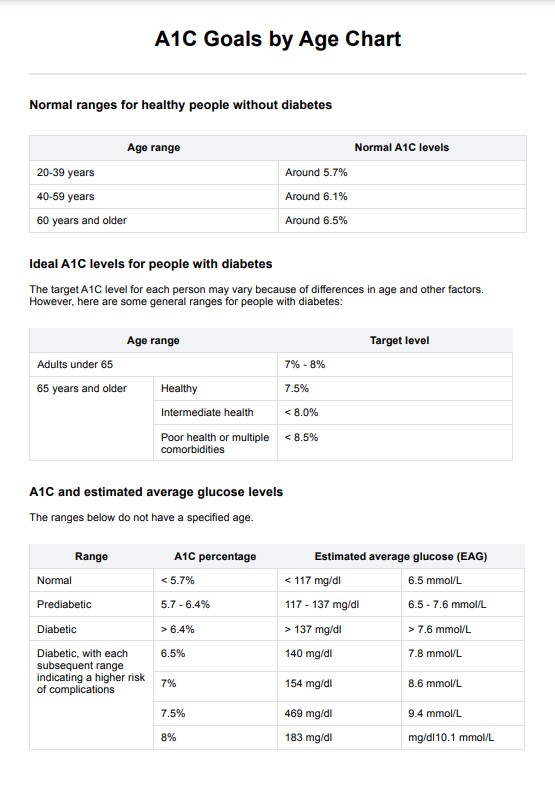A normal hemoglobin A1C (HbA1C) level for a person without diabetes is below 5.7%. Levels between 5.7% and 6.4% indicate prediabetes, while an A1C of 6.5% or higher suggests diabetes, highlighting the importance of regular screening to detect potential glucose metabolism issues early

A1C Goals By Age Chart
Use our free A1C Goals by Age Chart to learn the recommended A1C goals for people of different ages. Download our free PDF and example here.
A1C Goals By Age Chart Template
Commonly asked questions
Yes, A1C levels tend to increase with age due to various physiological changes, including decreased insulin sensitivity and alterations in glucose metabolism. The normal range for A1C can rise slightly as individuals age, reflecting metabolic shifts, even among those without diabetes.
The American Diabetes Association's new guidelines for A1C levels emphasize individualized targets based on a person's age, health status, and duration of diabetes. Generally, a target A1C of less than 7% is recommended for most adults with diabetes, while older adults or those with significant comorbidities may have higher targets, such as 7.5% to 8.5%, to minimize the risk of hypoglycemia and complications.
EHR and practice management software
Get started for free
*No credit card required
Free
$0/usd
Unlimited clients
Telehealth
1GB of storage
Client portal text
Automated billing and online payments











